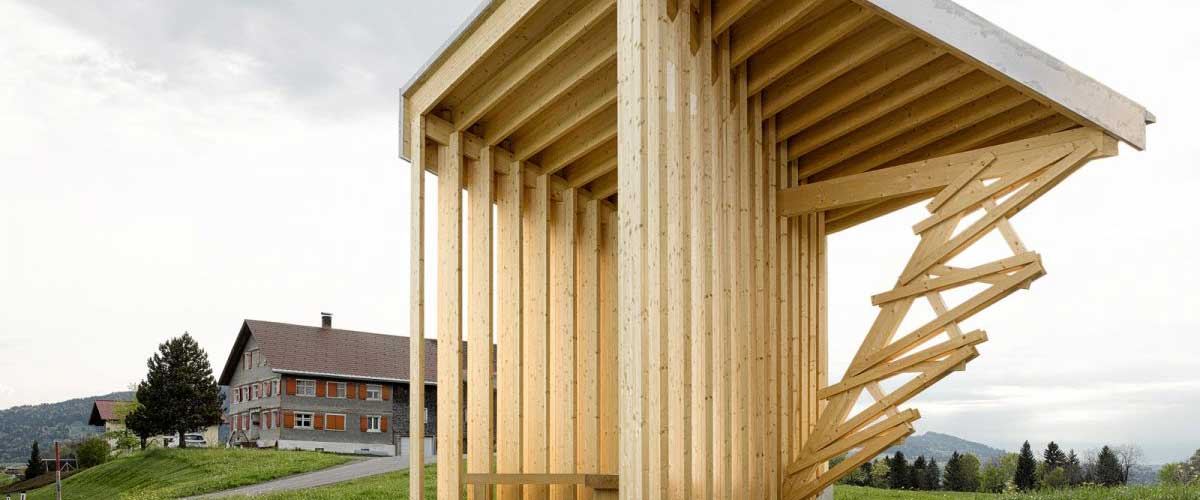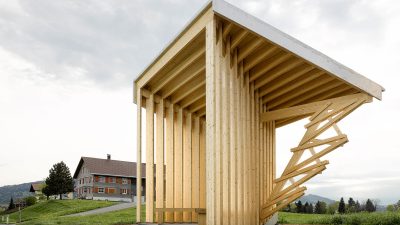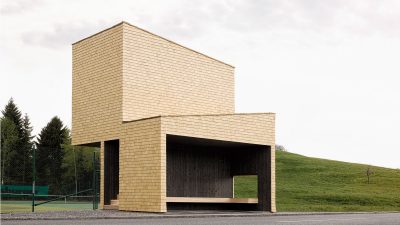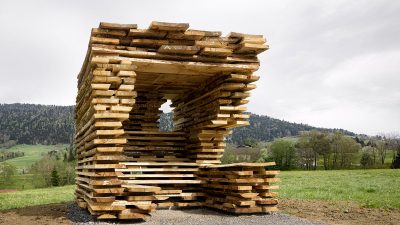7 international architecture offices designed 7 bus stops for the Bregenzerwald community in Krumbach, and enter into a dialogue with people, landscapes and tradition. Accompanied by architects from the region and local craftsmen, small utility buildings, akin to extraordinary sculptures, have been created in the public spaces.
Bus stops are among the things of everyday life in which we often pass carelessly, and they have a visual appearance to which we are pretty much resigned. However, an apparently simple task such as the design of these utility buildings, offers unimaginable possibilities. They are not only functional traffic structures, that provide protection against wind and weather throughout the year, but can become a landmark that can be seen from afar, a sculpture, a podium, even a “lounge” in a public space.
The wide range of creative possibilities is demonstrated by the project BUS: STOP Krumbach. Seven international architects’ offices from Spain, Chile, Norway, Belgium, China, Japan and Russia have contributed to BUS: STOP on behalf of the cultural Krumbach association. The project highlights new opportunities for rural development and also considers the structural and economic development of new resources.
Alexander Brodsky, dvvt (Jan de Vylder, Inge Vinck and Jo Taillieu), Ensamble Studio (Anton Garcia-Abril and Débora Mesa), Sou Fujimoto, Amateur Architecture Studio (Wang Shu and Lu Wenju), RintalaEggertsson Architects (Sami Rintala and Dagur Eggertsson) and Smiljan Radic from Hugo Dworzak, Thomas Mennel, Helmut Dietrich, René Bechter, Hermann Kaufmann, Carlo Baumschlager and Bernardo Bader.
The designs were implemented by local craftsmen.



